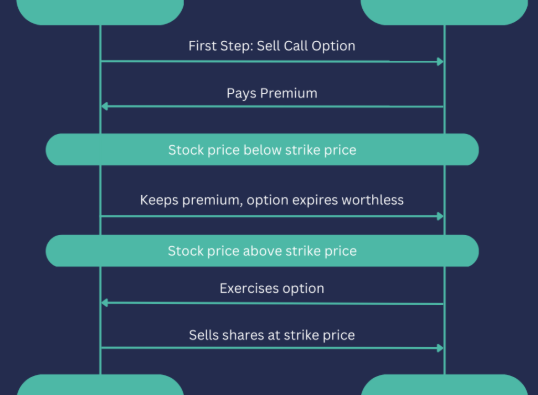
In an era dominated by fast-moving technology stocks and thematic investments, traditional value investing often feels overshadowed. As investors seek the next big opportunity, a debate has emerged: has value investing lost its edge, or does it remain a powerful approach for building long-term wealth?
Revisiting the Core of Value Investing
Value investing is a time-tested strategy centered on identifying stocks trading for less than their perceived worth. Originating with Benjamin Graham, this method is rooted in disciplined financial analysis and a long-term mindset. The approach involves purchasing stocks that appear undervalued based on intrinsic characteristics—such as earnings, assets, and overall business health—and waiting for the market to eventually reflect their true value.
The emphasis on a “margin of safety” helps reduce potential downside, making this method attractive for those seeking to balance reward with risk over time.
Historically, value stocks have often outperformed their growth counterparts during extended market cycles, particularly in periods of economic uncertainty. These companies, backed by solid fundamentals, tend to fare better when market sentiment shifts from speculation to financial resilience.
The Comeback of the Value Factor
Value investing faced a rough patch between 2018 and 2020. During this period, growth stocks—especially in technology—outpaced value stocks by a wide margin, causing some to question whether value investing was still relevant. However, the announcement of the COVID-19 vaccine in late 2020 marked a turning point, sparking a resurgence in value strategies that carried into the following years.
Despite this recovery, value stocks continue to trade at a significant discount relative to growth stocks. This prolonged disparity suggests that the recent outperformance of growth stocks stemmed more from rising valuation multiples than from genuine earnings growth. While that phase inflated growth stock valuations, it also created opportunities for value investors to find bargains.
Understanding Market Valuations and Spreads
One reason value investing underperformed during the late 2010s was the widening gap between how the market valued growth and value stocks. The forward price-to-earnings (P/E) ratios of high-growth companies surged, far outpacing those of traditional value plays. During extreme periods, such as the dot-com bubble and the pandemic-driven rally, the gap in valuations reached historically high levels.
Although value has started to regain some ground, valuation gaps remain elevated. The interplay between these spreads and overall returns is significant but not the sole driver of performance. Other factors—like shifts in company fundamentals, sector rotation, and rebalancing within portfolios—contribute to long-term returns through mechanisms collectively referred to as structural alpha.
Shifting Trends in Investment Strategy
New investment philosophies are steadily emerging to challenge traditional approaches. Thematic investing, for example, emphasizes building portfolios around global trends like clean energy or digital transformation, often prioritizing long-term narratives over short-term valuations.
Technology also plays an increasingly important role. Advanced data analytics and machine learning now help investors detect inefficiencies and patterns that human analysis might miss. This integration of technology doesn’t render value investing obsolete—but it does suggest that incorporating modern tools can enhance its effectiveness in the current landscape.
As markets become more complex, many investors are adapting value principles to better reflect contemporary realities, blending them with insights from emerging industries and alternative datasets.
Professional Perspectives on Value Investing’s Relevance
Insights from seasoned professionals offer a range of views. John Smith, an analyst at Clearview Investments, believes that while the original blueprint of value investing still holds, the methodology needs refinement. According to him, adapting to modern challenges requires combining time-honored fundamentals with innovative analysis tools.
Sarah Green from Horizon Capital echoes a more cautious tone. She contends that while traditional metrics like book value and P/E ratios remain useful, they are no longer sufficient on their own. With more companies relying on intangible assets such as brand equity or intellectual property, dynamic valuation models are now essential.
Meanwhile, strategist Michael Chen offers a balanced take, emphasizing that while value investing must evolve, its core principles remain durable. He advocates for using sector-specific insights, risk mitigation, and adaptable frameworks to keep value investing relevant amid global economic shifts.
Learning from the Past: Real-World Examples
Warren Buffett’s career provides perhaps the most compelling evidence of the enduring power of value investing. His strategy—grounded in evaluating companies based on cash flow, management quality, and intrinsic value—has weathered countless market cycles. Iconic investments in firms like Coca-Cola and American Express highlight the long-term success achievable through a value-focused lens.
Post-crisis recoveries also illustrate the strength of value principles. Following the 2008 financial meltdown, companies with strong fundamentals and attractive valuations rebounded faster and more sustainably than highly speculative assets. Investors who stayed grounded in fundamental analysis emerged with meaningful gains as stability returned to markets.
These examples reinforce the notion that even during turbulent times, value strategies anchored in disciplined research and patient capital allocation can deliver significant rewards.
Conclusion: A Strategy That Must Evolve, Not Disappear
While value investing may no longer dominate headlines, it is far from obsolete. The strategy continues to offer a solid foundation for investors who prioritize long-term performance over short-term hype. That said, success today demands more than just adherence to traditional metrics. A deeper, more flexible approach—one that incorporates qualitative insights, technology-driven analysis, and evolving valuation models—is increasingly vital.
In a market defined by rapid change, the principles of value investing remain highly relevant—but they must be applied with greater sophistication and a willingness to adapt. Those who can blend timeless investment wisdom with modern tools are well-positioned to succeed in the years ahead.









